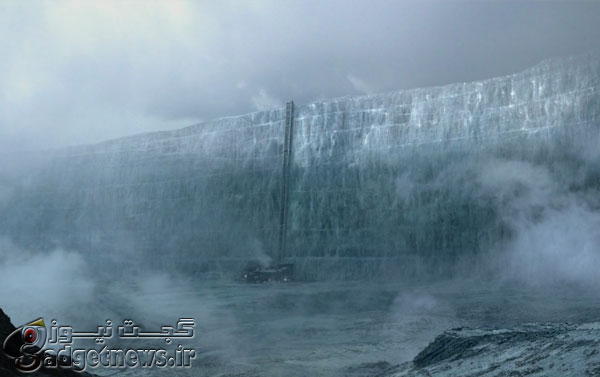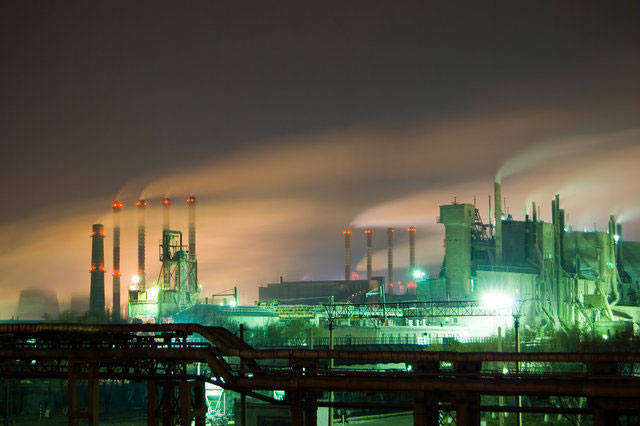
سال گذشته همین روزها بود که طرحی از سوی کارشناسان ژاپنی برای جلوگیری از نشت آبهای زیرزمینی آلوده به مواد خطرناک هستهای به دریا مطرح شد. این طرح ساخت یک دیوار بزرگ یخی در اطراف سازههای هستهای فوکوشیما بود تا با انجماد چنین آبهایی از ورود آنها به دریا جلوگیری کند. اما تا یک سال بعد هم این طرح تنها در حد ایده و رایزنی باقی ماند، تا اینکه امروز خبر رسید مقامات مسئول بخش هستهای ژاپن اجازه ساخت این طرح را صادر کردهاند.
البته چنین طرحهایی پیشتر نیز اجرا شده بود، اما وسعت ذکر شده در طرح ژاپنی به هیچ وجه تاکنون سابقه نداشته است. یکی از مسئولان ژاپنی مرتبط با این پروژه به سایت PhysOrg گفت:
«ما به عنوان مسئولین نگرانیهایی را با شرکت پیشنهاد دهنده طرح TEPCO مطرح کردیم؛ از جمله امکان نشست زمین در صورت اجرای این طرح. اما در مجموع نگرانی جدی از اتفاقی خطرناک مشاهده نکردیم و در نهایت تصمیم گرفتیم که TEPCO با در نظر گرفتن جمیع جوانب به ایجاد این دیوار یخی دست بزند.»

پس با این حساب مهندسین از ماه بعد ساخت این سازه 1.5 کیلومتری را آغاز میکنند. ایده ساخت این دیوار به این گونه است که لولههایی به فاصله یک متر تا عمق 20 تا 40 متری زمین نفوذ داده میشود. سپس با وارد کردن مواد خنک کننده قوی، آبهای زیرزمینی اطراف این تأسیسات یخ زده میشود. این اتفاق باعث ایجاد یک سپر قدرتمند خواهد شد تا حداقل از ورود این مواد به دریا جلوگیری کند.
منبع : theverge
Giant underground ice wall approved to protect Fukushima plant water
Japan intends to move forward with an ambitious plan to freeze the ground around its damaged Fukushima nuclear plant, creating a so-called underground ice wall to prevent water that's been contaminated with radioactive materials from escaping and entering the broader water supply. Japan adopted the plan in September of last year, and the AFP reports that its nuclear regulator has now approved it, with construction scheduled to start next month.
"Experts are still questioning whether an ice wall will actually work"The project intends to freeze the ground around four reactors, as well as other related buildings, at Fukushima down to a depth of nearly 100 feet. In total, the frozen wall of earth will stretch for nearly nine-tenths of a mile and is meant to reach temperatures of minus 40 degrees Fahrenheit (minus 40 degrees Celsius). A series of pipes carrying coolant will be used to freeze the land. Beyond preventing water from escaping the area, the AFP reports that the hope is that it will also prevent water from flowing into the plant from nearby hillsides. Construction is expected to finish in March of 2015 and cost about 32 billion yen ($314 million).
The AFP reports that some aspects of the plan may still be subject to approval by Fukushima plant operator Tokyo Electric Power Co (TEPCO). And even after construction begins, there are likely to be lasting concerns. While walls of frozen earth have reportedly been used in the past for tunnels and subways, they've never been used for a purpose like Fukushima's and not for the length of time that it'll take — potentially several decades — for the plant to be decommissioned.
Other concerns over the expensive plan were raised on Friday, before its approval today, at a meeting with Japan's Nuclear Regulation Authority. Both government officials and experts expressed questions over the plan's efficacy, according to the Associated Press, asking whether it will actually be able to prevent water contamination over the long term and if it might cause any problems for the area in doing so. Ultimately, those concerns were't enough to hold the plan back, but it'll be necessary to watch its progress to see if the wall's goals are actually fulfilled.
TEPCO began one other large initiative to prevent the growth of contaminated water last week, beginning to release water that was deemed to be safe out into the Pacific Ocean, according to Reuters. The move was controversial due to the presence of some contamination, however minimal, but with more nearby water reportedly entering the facilities and mixing with radioactive contaminants on a daily basis, it's become increasingly necessary that the plan prevent its entrance and facilitate its safe removal. TEPCO reportedly plans to divert 100 metric tons of clean groundwater each day into the ocean. About 400 metric tons reportedly enter the facility on a daily basis, with some of the additional water being stored in tanks.
 گجت نیوز آخرین اخبار تکنولوژی، علم و خودرو
گجت نیوز آخرین اخبار تکنولوژی، علم و خودرو 





